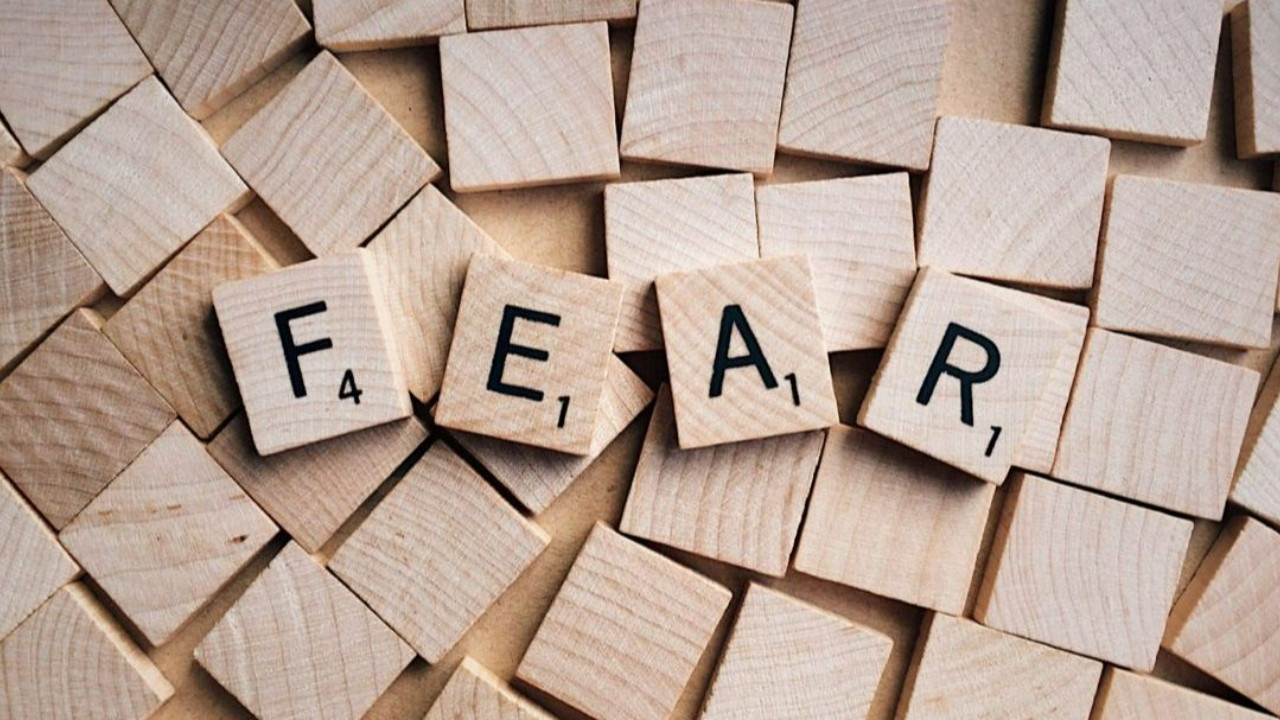
It is important have a definition of fear before we look at how to manage it and for the purposes of this podcase I am using the dictionary definition which is ‘fear is an unpleasant emotion caused by the threat of danger, pain, or ham’. Fear is not all bad and it is good to acknowledge the benefits of fear in measured amounts when it is being used by us to warn us of danger whether that danger is physical or emotional.
Fear is trigged in our bodies as a physical feeling and all of us are capable of feeling. It can be very debilitating when it is out of control and the good news is that we can control it.
We experience fear when we are in danger or when there is a perceived threat. How that feeling gets created is when we perceive danger based on what we are seeing either in our environment or in our thoughts and we then have a chemical, hormonal and neurological response namely the Fight, Flight or Freeze response all of which are uncomfortable but warn us and allow us to prepare physiologically to stay and fight, run or freeze or play dead.
The flight or freeze response is a physiological reaction that occurs in response to a perceived threat. It is a survival mechanism that is activated by the sympathetic nervous system and is characterized by a release of adrenaline and other stress hormones.
The flight response is characterized by an increase in heart rate, blood pressure, and breathing rate, as well as a release of glucose and fatty acids into the bloodstream to provide energy for physical activity. This response is designed to help an individual escape from or confront a threat.
The freeze response, on the other hand, is characterized by a decrease in movement and a state of immobility. This response is thought to be an attempt to avoid detection by a predator or to play dead in order to survive.
Both the flight and freeze responses are automatic and not under conscious control. They occur in response to a wide variety of perceived threats, including physical threats, emotional threats, and social threats.
In the context of flight, the flight or freeze response can be triggered by various factors such as turbulence, engine failure, or other unexpected events during the flight. The response can manifest as fear, anxiety, or panic, and can lead to a range of physical and psychological symptoms, including increased heart rate, sweating, and difficulty breathing.
It is important to note that while the flight or freeze response can be uncomfortable and even debilitating, it is a normal and adaptive response to stress. In some cases, it may be beneficial to learn coping mechanisms, such as relaxation techniques or cognitive-behavioural therapy, to manage the symptoms associated with the flight or freeze response.
There are several techniques that can be used to reduce the feeling of the flight or freeze response in the body.
One such technique is called "grounding," which involves bringing your awareness to the present moment by focusing on the physical sensations in your body. This can help to interrupt the cycle of stress and anxiety that can be associated with the flight or freeze response.
Another technique that can be done is physically moving your body, such as spinning in a circle or doing a quick dance. This can help to release pent-up energy and reduce the physical symptoms of the flight or freeze response, such as a racing heart or tight muscles.
Another technique that can be used to reduce the feeling of the flight or freeze response is deep breathing. Taking slow, deep breaths with the exhale longer than the inhale, this can help to slow your heart rate and reduce feelings of anxiety or panic. You can try to focus on the sensation of the breath as it enters and exits your body, and try to breathe in through your nose and out through your mouth. This can help to bring a sense of calm and control to the body.
Additionally, progressive muscle relaxation is a technique that can help to reduce the physical symptoms of the flight or freeze response by tensing and then relaxing different muscle groups. This can be helpful in reducing feelings of tension and anxiety.
It is important to remember that these techniques may take some practice to master, so it is important to be patient with yourself and to keep trying different strategies until you find what works best for you.
I also share a technique of spinning the feeling which in my experience has allowed me help thousands of client reduce feelings of fear from an intense ten down to a zero. Click here to learn about this technique.
How to stay in the circle:
Get free access to the life changing 7 Day Positivity Project video training here http://www.moirageary.com/pos-proj
Facebook Group for live chats with me: https://www.facebook.com/groups/1002878506405145
Instagram: https://www.instagram.com/moirageary_
YouTube: https://www.youtube.com/channel/UCne8d8FxIjyMBqrorDUXdBQ
Website: www.moirageary.com
Email List: https://www.moirageary.com/stay-connected
Facebook Page: https://www.facebook.com/recombobulator
Get your free access to the life changing 7 Day Positivity Project video training here http://www.moirageary.com/pos-proj

